"12 - 11 - 9 - 10 - 3 - 6 - 7 - 1 - 2 - 8 - 4 - 5"
march 08, 2014.
„χρόνος ἀριθμός ἐστίν“
... et hopla! ( * )
In the afternoon of Saturday February 8th, in the wake of Le Temps Musical, we gathered for a 5th unPublic, in my living room in Vincennes. With Jeff Kolar (who had come and stayed with us as part of his European tour, and who also participated in the 'musical time round table' at Le Cube) Hanna B., Anton Mobin, Rébus and myself.
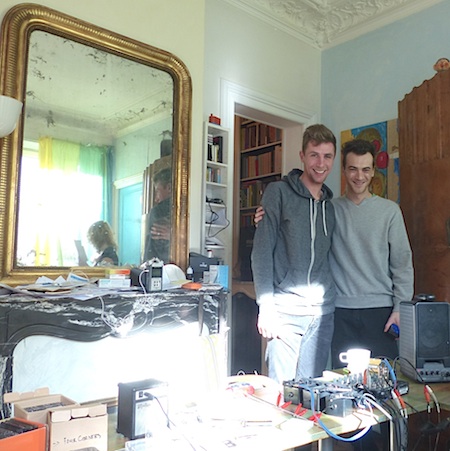
An important source of inspiration for the round table presentations and discussions at Le Cube had been Karlheinz Stockhausen's early (and very stockhausian) paper '... wie die Zeit vergeht ...'. It first appeared in 1957, in volume 3 of Die Reihe, an influential and controversial German journal on post-WWII new - electronic and (as referred to in its title) serial - music, edited by Herbert Eimert and Karlheinz Stockhausen.
If nothing else, this particular Stockhausen paper remains a major touchstone in the curious, complex and convoluted process (both psychologically and historically) that accounts for the fact that a large and important faction of European post WWII composers searched to overcome the - at the time still so very recent - horrors of a 'total war' by basing their music on a 'total serialism' ( ... die Reihen fest geschlossen ... ).
The paper investigates the feasibility of a number of musical aspirations and dreams, inspired by the then still very new techniques available in the electronic music studio. Stockhausen's ideas, however, are phrased in a difficult to follow 'private' (or if you want: faulty) scientific language, infected by the scientism that was typical of, not all, but definitely a great many of, the post WWII composers, especially in Europe, and especially in the period 1950 - 1980.
In '... wie die Zeit vergeht ...' time is identified as the determining variable of all aspects of sound and music. A composition's overall structure as much as each individual sound's color (the timbre) and each note's pitch ... all at their proper scale and dimension, Stockhausen says, are built from sequences of pulses in time. A time-continuum relates our notions of rhythm and pitch: what we call 'rhythm' are the infrasonic frequencies of impulses; what we call 'pitch' are the audible frequencies of impulses: ( ** )
This was not a new insight - similar ideas about the relationship between musical time scales already formed the core of Henry Cowell's New Musical Resources (published in 1930) - but it rooted in Stockhausen the longing for a unification of the use of e.g. pitch and rhythm in composition, which then lead him to the investigation of possible scales of durations, that in some way stand in a one-to-one relationship with (the Western well tempered) scale of pitches.
Among its limiting factors Stockhausen (though without specific references, and not in these precise terms) identifies the sonic/acoustic uncertainty principle, analogous to Heisenberg's uncertainty principle, that is usually attributed to Dennis Gabor ( *** ): it is impossible to sharply localize a signal simultaneously in both the time domain and the frequency domain.
...
It is not our intention to embark upon another exegesis of Stockhausen's text. Over the years, a lot of interesting things and comments have been written on, around and about '... wie die Zeit vergeht ...' ( **** ). The questions and problems that Karlheinz addresses in the paper remain of interest and importance; and though some of them have found additional clarification within and through the methods of digital sound processing (e.g. that of granular synthesis), others - specifically where the mechanisms of the human, perception of sound and music enter into play - remain as elusive as before.
unPublic #5
Originally intended to be put to use in a more or less 'composed' form during the dinner intermission at the Temps Musical event at Le Cube, on Thursday February 6th, I 'hacked' Stockhausen's original German text into three short time-pass-poems. It was difficult to avoid that they became part of the material for the 5th unPublic, on Saturday February 8th - together with Jeff Kolar's radio-electronics and various pre-recorded cassettes that were used by Anton Mobin, Rébus & myself.
...
Here and there in the recordings you will hear Hanna recite and read them:
(i)
Präparationen
können entweder
gedanklich oder
praktisch
seinabsichtslos,
ganz frei zu spielenjede Höhe
so schnell
so schnell
schnell
schnell schnell
schnell schnell schnell
schnell schnell wie
schnell wie
möglich
wie möglich
tiefer
lauter
kürzer
wird die Atemdauer ... Eigenzeiten
von Strukturen
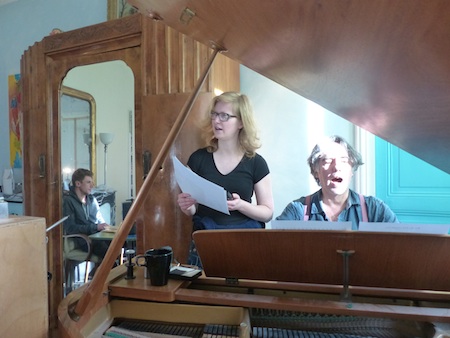
(ii)
Stille - Ton - Stille
...
Ton - Ton[dreimal so lang:]
Stille - Ton - Stille
...
Ton - Ton[doppelt so kurz:]
Stille - Ton - Stille
...
Ton - Ton
...Impulse
um Proportionen zu fixieren,
überhaupt,
da diese ja
vor allem dort
die kurzen auffraßen,
je nach dem was überwiegt;ohne daran zu denken
was denn da dauern soll;
aufwärts oder abwärts;das Verhätnis, nicht
die Differenz
wurde dabei zunichte
gemacht.
The third time-pass-poem is a quick, rough 'n' dirty, sketch for a piece of music based on an 'atomic' clock pulse and a very simplistic interpretation of the idea of the use of a scale of durations that stands in a direct (a harmonic) relationship to the scale of pitches. Sort of a '... wie die Zeit vergeht ...' for Dummies.
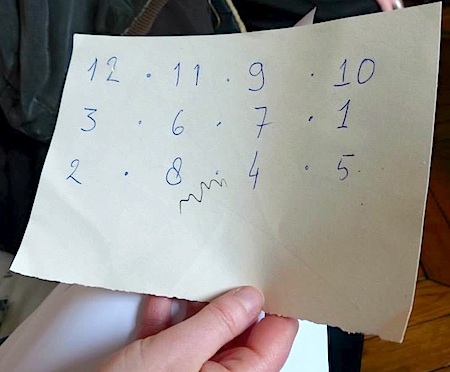
Or rather: durations are interpreted as repetitions (number of pulses), and the - straightforward - relationship is that the number of repetitions of a note is taken to be equal to its chromatic scale number.
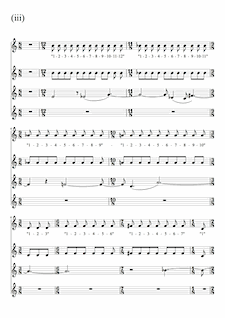 |
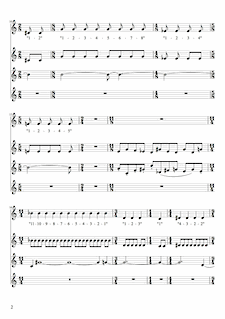 |
In the sketch this 'translation' is applied to one of the series that Stockhausen uses in the examples that he elaborates in his article (12, 11, 9, 10, 3, 6, 7, 1, 2, 8, 4, 5), taking number '1' to be a C1, number '12' its octave, C2, and using an eight note as the 'atomic pulse':
The persistent pulsing repetitiveness gives it an obvious 'minimal' character, far removed from anything even remotely close to Stockhausen's musical universe. In the unPublic recordings you will hear us repeatedly doing the Stockhausen series in this manner, with Hanna singing the corresponding numbers in German (uP 17) and Jeff doing them in English (uP18).
...
Curiously, the two major examples of 20th century composers that extensively use vocal number counting in their work, are Philip Glass (Einstein on the Beach) and Karlheinz Stockhausen (in Licht you will encounter number counting all over the place) ...
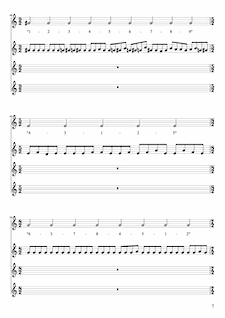 |
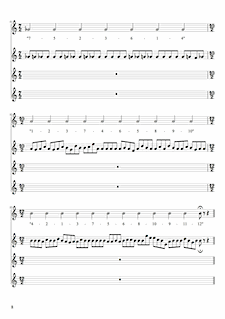 |
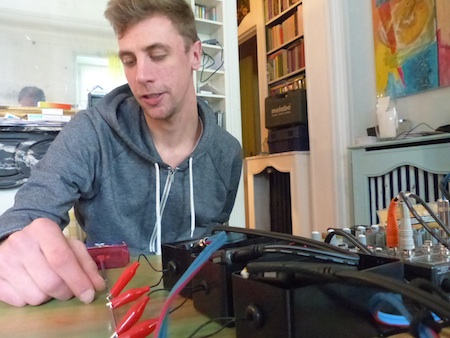
Read about unPublic on the SoundBlog:
(2023, november 3-..) - Ethereal Reverberations. A Decade of unPublic (« Dix ans qu'on fait la musique sans public ») (uP#100)
(2023, august 20) - Three days of residency at Les Ateliers Claus, Brussels (uP#65, uP#93, up #94)
(2022, september 2) - Three Musketeers Musicking Maastricht & La Générale (uP#86, up #87)
(2022, august 4) - Berlin: Zero Cohesion (3) (uP#84)
(2022, july 24) - Berlin: Zero Cohesion (2) (uP#83)
(2022, july 11) - Berlin: Zero Cohesion (1) (uP#82)
(2022, july 2) - X-unPub (uP#81)
(2022, march 13) - "Manifeste" (uP#80)
(2021, june 13) - Die Stillgestandenen (The Stillstands / Standstills / Stillstanders) (uP#67)
(2021, may 02) - Playing Apart Together: Chuncheon↯Paris (uP#73)
(2018, november 02) - "Five years stuck on my eyes" (Lustrum Non Publicum) (uP#56)
(2018, september 01) - t'Obsolete or not t'Obsolete ... [iv] (uP#54)
(2018, august 13) - Rage, rafts & refugees (uP#49, uP#50)
(2018, august 10) - t'Obsolete or not t'Obsolete ... [iii] (uP#45)
(2017, june 11) - Moving out, of, on ... [ii] (uP#42)
(2016, june 10) - unPublic #18 - 대부도 (Daebu-Do), 14 June 2015 (uP#18)
(2016, may 07) - In Praise of Slowness (uP#21)
(2015, july 15) - Bridges, troubles, water (uP#19)
(2015, april 14) - Mal-là--colisé dans l'espace et dans le temps (uP#16)
(2014, august 02) - Appearance and Reality (uP#8)
(2014, march 08) - "12 - 11 - 9 - 10 - 3 - 6 - 7 - 1 - 2 - 8 - 4 - 5" (uP#5)
(2013, december 31) - Candles, Cassettes & Champagne (uP#4)
(2013, november 23) - unPublic 1, 2 (sauf riverains) (uP#1, uP#2)
Read about unPublic on Medium:
April 16, 2022 - Playing Apart Together (uP#66-#69)
March 17, 2022 - All delusion is expansive (uP#80)
November 10, 2021 - The Future always was Yesterday
Read about unPublic in Gonzo (Circus) [Dutch]:
Gonzo #143, januari/februari 2018 - Met kop noch staart: muzhakdag! (uP#48)
Gonzo #139, mei/juni 2017 - De waan, de wil, de weg
Read about unPublic elsewhere:
Plus-X-Creative, january 2022 - Playing Apart Together
Electronic Cottage, november 2018 - unPublic - 'Five Years stuck on my eyes' -sketch as a memoire
To listen, download & support, visit unPublic @ Bandcamp.
notes __ ::
(*) "Time is a kind of number" - Aristotle, Physics Book IV, part 11 [
^ ]
(**) The sound file illustrates the 'rhythm-pitch' continuum, using a single pulse, consisting in one single sample, that was randomly taken from a 44.1 kHz digital audio file (i.e. the pulse is a 'sound' with a duration of 0,0000226757 seconds = 22,68 micro seconds). The example has 10 sections, each with a duration of 10 seconds. In the first, you hear 10 pulses, separated by 1 sec of silence; in the second, there are 20 pulses, separated by 1/2 sec of silence; then 40 pulses, separated by 1/4 sec of silence; ... etc ...; the final section has 5120 pulses, each two separated by 1/512 sec of silence. The corresponding pulse frequency thus doubles with each step: 1 Hz, 2 Hz, 4 Hz, 8 Hz, ..., until 512 Hz. (The curious 'liquidy' sound of the 128 Hz section is a digital artifact caused by Soundcloud's encoding of the original aiff-file.) [
^ ]
(***) Dennis Gabor - Acoustical Quanta and the Theory of Hearing, Nature vol. 159, 1947 [
^ ]
(***) See for example:
. Curtis Roads - Microsound, MIT Press 2001
. Seth Horvitz - Boundaries of perception and the endless struggle for unity in the music of Karlheinz Stockhausen (2009)
. Christopher Koenigsberg - Karlheinz Stockhausen's New Morphology of Musical Time (1991)
[
^ ]
Read about Karlheinz Stockhausen on the SoundBlog:
(2014, march 08) - "12 - 11 - 9 - 10 - 3 - 6 - 7 - 1 - 2 - 8 - 4 - 5"
(2013, october 12) - "At 19:07 the four helicopters flew over the Pont Neuf"
(2010, march 30) - on-g'luk = un-luck, that is: malheur, twice ...
(2008, february 12) - Karlheinz's Song of Praise
(2004, september 06) - vicky's mosquitos
(2004, august 19) - alLicht
tags: time, music, sound, Stockhausen, unpublic
# .449.
comments for Le Temps Musical ::
|
Comments are disabled |